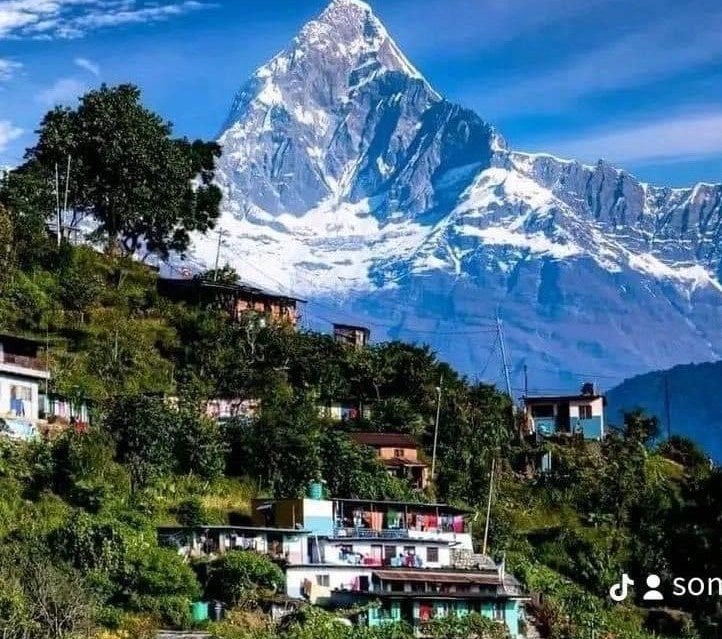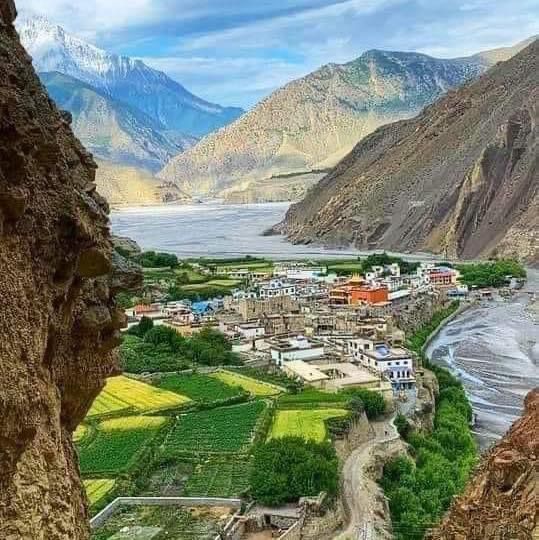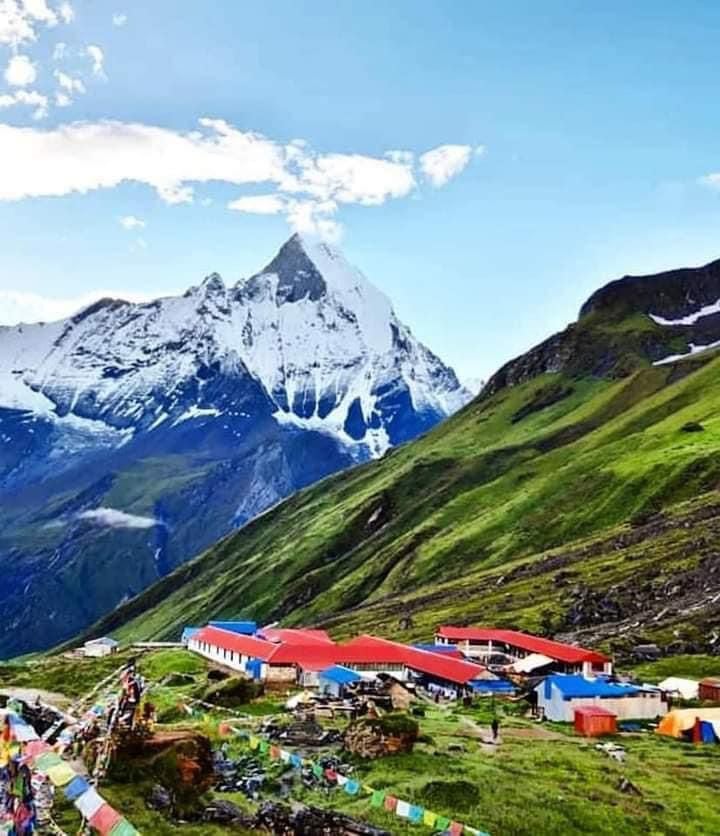Harnessing Nepal’s tourism potential: An adventure in culture and sustainability

Nepal, cradled in the heart of the Himalayas, is more than just a picturesque destination – it’s a land of adventure, deep spirituality, and cultural richness. Known for the towering Mount Everest, the world’s highest peak, and Lumbini, the sacred birthplace of Lord Buddha, Nepal draws millions of visitors seeking something unique. It offers thrilling experiences for adventurers, peaceful retreats for the spiritually inclined, and a cultural tapestry woven with centuries of tradition. However, while Nepal’s tourism is growing, it faces challenges that need to be addressed for the country to realize its full potential.
Adventure tourism has long been one of Nepal’s most significant attractions. The country’s dramatic landscapes provide a perfect backdrop for trekkers, with world-renowned routes like the Annapurna Circuit and Everest Base Camp offering experiences found nowhere else. Every year, thousands of adventurers make their way to Nepal to explore its rugged terrain, but the country’s offerings extend beyond trekking. Paragliding, rafting down wild rivers, mountain biking through challenging terrain, and even bungee jumping from dizzying heights are available for thrill-seekers. However, with such immense potential, there’s still much room to invest in infrastructure, improving safety and creating more unforgettable moments for visitors.
Beyond its rugged mountains, Nepal is a place of profound spiritual significance. For Buddhists around the world, Lumbini is a pilgrimage site like no other, offering a place for reflection and connection to the roots of their faith. Similarly, Hindu pilgrims visit the revered Pashupatinath Temple in Kathmandu, a sacred site that has attracted devotees for centuries. The Kathmandu Valley itself is rich with ancient temples, stupas, and palaces, each a testament to Nepal’s rich history and deep-rooted spirituality. With a wealth of culture and religion to offer, Nepal’s cultural and religious tourism is brimming with untapped potential, waiting to be more widely promoted to international audiences.

Nepal’s natural beauty also makes it a prime destination for eco-tourism. The country’s rich biodiversity, showcased in national parks like Chitwan and Bardia, is home to some of the world’s most endangered species, including Bengal tigers and one-horned rhinos. As global travelers become more eco-conscious, Nepal stands ready to offer sustainable tourism experiences that allow visitors to connect with nature while preserving the environment. Rural tourism, too, is becoming more popular, allowing tourists to experience the authentic charm of village life and ancient traditions. Not only does this form of tourism provide unique and personal experiences for travelers, but it also supports local economies and fosters sustainable development.
In recent years, a new trend has been emerging in Nepal – health and wellness tourism. With its peaceful environment and deep spiritual roots, Nepal has become an ideal destination for those seeking balance and rejuvenation. Wellness retreats offering yoga, meditation, and Ayurveda are on the rise, drawing visitors from across the globe. Nepal’s serene hills and tranquil landscapes provide the perfect setting for these holistic experiences, giving visitors the opportunity to heal their minds and bodies. By investing in wellness resorts and promoting Nepal as a haven for rejuvenation, the country could attract a new segment of travelers seeking peace and renewal.
Nepal’s government has made significant efforts to boost tourism through various initiatives over the years. Campaigns like Nepal Tourism Year 2011 and Lumbini Tourism Year 2012 sought to position Nepal as a must-visit destination. The Visit Nepal 2020 campaign had set ambitious goals to draw two million tourists, but unfortunately, it was disrupted by the COVID-19 pandemic. Now, the government’s focus has shifted towards a longer-term plan, with the Tourism Decade 2023-2033 aiming to promote sustainable tourism and foster lasting economic growth. These initiatives demonstrate the government’s commitment to revitalizing Nepal’s tourism industry.
Tourism has become an integral part of Nepal’s economy. In 2023, the country saw a 3.5% growth in tourism, with 12,386 tourists visiting Nepal by the end of 2022. Although the country has the capacity to host up to 3.5 million tourists annually, the current number of visitors averages between 1.1 to 1.2 million. On average, tourists spend 13 days in Nepal, contributing approximately 45 US dollars per day to the economy. Tourism accounts for between 8% to 10% of Nepal’s GDP and supports 27% of jobs in the country. Cultural tourism remains the dominant segment, with 56.5% of tourists arriving for religious or cultural reasons, followed by adventure and natural tourism.

However, despite its successes, Nepal’s tourism industry is not without its challenges. Infrastructure, especially roads and air connectivity, remains a significant issue, making it difficult for travelers to reach many of the country’s stunning yet remote destinations. Tourism is also highly seasonal, causing fluctuations in business and leaving many facilities underutilized for parts of the year. Nepal has a limited number of high-end luxury accommodations, which may deter more affluent travelers. Environmental degradation along popular trekking routes, coupled with inadequate waste management, threatens the sustainability of eco-tourism. Connectivity in rural areas and a shortage of trained professionals in hospitality and guiding are further barriers to tourism growth.
To overcome these obstacles and truly unlock the potential of Nepal’s tourism, the government will need to take an active role. Improving infrastructure—whether it’s upgrading roads, enhancing air connectivity, or improving digital communication—will make it easier for travelers to access the country’s hidden gems. There also needs to be a focus on promoting sustainable tourism, ensuring that Nepal’s natural beauty and cultural heritage are preserved for future generations. Training programs to develop a skilled workforce in hospitality, guiding, and adventure tourism will improve service quality and enhance the tourist experience. Furthermore, boosting global marketing efforts and building resilience against natural disasters will help Nepal stand out on the international tourism stage.
Nepal’s tourism industry holds immense promise. From its adventurous landscapes and spiritual sanctuaries to its potential as a wellness destination, the country offers a truly unique experience for travelers. With the right investments, strategic planning, and a commitment to sustainability, Nepal can become a global leader in tourism. As the country moves forward with its vision of promoting long-term growth, it has the opportunity to provide visitors with unforgettable journeys while making a lasting contribution to the economy. The future of Nepal’s tourism is bright, and with focused efforts, it will continue to shine as a top travel destination.
(The author serves as a Tourism Promoter for the Wales at Ministry of Culture, Tourism and Civil Aviation and holds the position of Chair for the Tourism Promotion Committee under the Non-Resident Nepali Association International Coordination Council (NRNA ICC).


Leave Comment